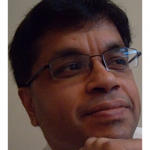This year at Gartner Symposium/ITxpo, I learned a new term: ContinuousNext, as introduced by Gartner VP Chris Howard in his opening keynote. The term can be easily paired down into two distinct words: “continuous” and “next.” But combine the two and you have the continuous emergence of the next paradigm, the next big thing. Howard went on to provide us a formula for ContinuousNext based on a framework of shaping, shifting, and sharing in the digital world which I found intriguing.
“Information and technology are at the core of the business transformation and you are at the heart of IT,” asserted Howard to the attending CIOs. He also advocated that business transformation is a project for the executive team.
Gartner defines ContinuousNext as the formula for continued success in a world that is constantly changing.
But how do IT leaders achieve that continued success?
Mike Harris, executive vice president, head of Global Research & Advisory at Gartner, used the cycling metaphor of a Peloton, where the cyclists experience only 5 to 10 percent of the air resistance they face when cycling alone. In other words, the main contenders, the leaders of the pack, set the pace: They give shape to the emerging paradigms, and the others follow them and steadily shift at their own pace through sharing and collaboration.
How enterprises embark on this transformation journey depends on the dynamics of the role they choose to play and how they shape, shift, and share various aspects germane to this role. Let us see how.
Gartner suggests this breaks into three practices:
1. Culture hacking
“Hack your culture to change your culture,” said Kristin Moyer, research vice president & distinguished analyst at Gartner.
Moyer asserts that we must “hack our culture” to give better shape to it. She gave an example of a simple but powerful question that could be asked before a meeting: “How does this meeting advance our digital strategy?” Such thought-provoking questions can challenge traditional mindsets across the enterprise.
Moyer referenced another scenario about shifting accountability: A leader would award two points for those who made decisions and lose one point if it was a “bad” decision. CEO of Toyota Connected Zack Hicks had his own way of culture hacking: “If you come up with an idea, you are the CEO of the idea!”
Moyer also suggests sharing your failures and orchestrating a culture hackathon – an exercise with an open forum for trying out different ways of addressing perceived challenges around meaningful collaboration.
2. Digital product management
“Behind every successful product, there is a digital product manager,” asserted Mark Raskino, Gartner distinguished VP analyst. According to Raskino, digital product management is the new competency that fuels ContinuousNext.
Raskino explained that digital product managers deliver continuous innovation at scale for their customers by shaping and designing customer-centric products and services. Enterprises are in a position today to access various incubators of startups and innovative ventures to shift the prevailing mindset within the organization's walls. Such a shift is more likely to happen by hiring external product management expertise.
Skills must be shared across the enterprise as well, by cross-training internal talent. Technologies can also augment the skills of the existing workforce. According to Gartner, Infosys is redeploying 9,000 employees to more digitally fluent jobs thanks to artificial intelligence.
3. Digital twin of an organization
A Digital Twin of an Organization (DTO) refers to a digital replica of physical assets, processes, people, places, systems, and devices: This twin can then be used for various purposes. It is easier to shape the behavior of an organization by having fire drills where the executive leadership has a key role to play in a digital twin environment. “Digital twins bring ContinuousNext to life, and it loops from the physical to the virtual and back again,” said Helen Huntley, VP, analyst at Gartner. But it is important to make such shifts one process or location at a time and share the best practices across the organization.
Those then are the three mindsets and practices that Gartner outlined for shaping, shifting, and sharing the ContinuousNext.
From a technology perspective, artificial intelligence took center stage at the conference this year. More importantly, augmented intelligence. “Followers will adopt AI technology: Leaders will build augmented intelligence,” asserted Harris. Given that it is human-generated data that machine learning models are built on, there is always a chance of unconscious bias creeping in. “Choose your AI teachers well,” said Harris.
Technology, used properly, is a key magnifier while shaping, shifting, and sharing the mindsets and practices outlined above. Doing so results in dynamic capabilities that yield results. I’m looking ahead to an exciting new digital world fueled by ContinuousNext.
[ Want to learn more about leading at times of great change? Get the free eBook, Organize for Innovation, by Red Hat CEO Jim Whitehurst. ]





